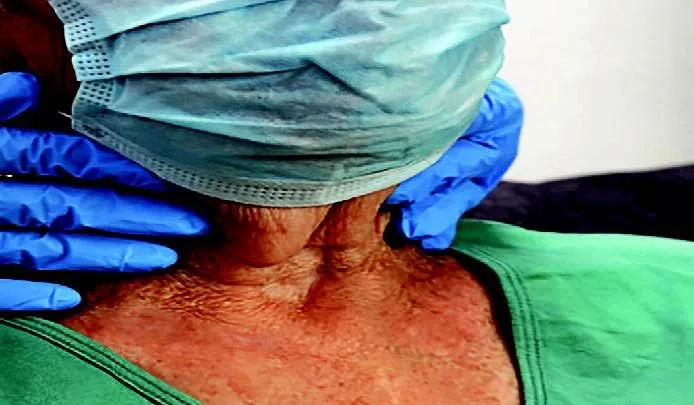One of the major problems seen in the senior citizens, and often under-recognized, is Hypothyroidism. It is related to progressive shrinking and atrophy of the thyroid gland and is more often seen in women.
Thyroid gland, a butterfly shaped organ responsible for producing a hormone called thyroxin (T4 ) which gets converted into triiodo thyroxin (T3), the active hormone which influences the metabolism of the body thus controlling the growth and many other bodily functions.
The thyroid function is controlled by the pituitary gland, a part of the central nervous system by producing a hormone Thyroid stimulating hormone (TSH).
Iodine is an essential part of the thyroid hormone and its deficiency which still is a common cause of thyroid related problems in some parts of our country.
The compulsory iodization of the common salt available in the markets has been responsible for a significant improvement in this problem.
Hypothyroidism (deficiency of thyroid hormone) is a much more common problem than hyperthyroidism (excess of thyroid hormone). According to several studies at least 10% of our adult population has hypothyroidism. In a study from SKIMS, a prevalence of 16% has been reported recently. In the rural population the figures were higher than their urban counterparts.
Ageing and Hypothyroidism:
A number of population based studies have shown age related deterioration in the thyroid function with alterations in the levels of T3, T4 and other related hormones like thyroglobulin and thyro-peroxidase antibodies (TPO). Recent studies are consistently showing increased levels of TSH with advancing age.
Hypothyroidism is the most common thyroid disorder in the elderly with reported prevalence up to 10 % in men and 16% in elderly women. The index of suspicion needs to be very high because the classical symptoms seen in the younger population (exhaustion, sensitivity to cold, weight gain, puffy face, coarse hair and skin etc) are infrequent in the aged population.
Common features which are often seen in the elderly are memory loss, decrease in cognitive function confused with senile dementia, drowsiness and constipation. The diagnosis of hypothyroidism (normal T4, T3 but high TSH) needs to be considered in all elderly patients being treated for depression. The common confounding factors in the elderly population are frailty, intake of certain drugs like; amiodarone, blood sugar lowering drugs -sulfonyl urea, lithium and certain anti-cancer drugs like interleukins.
Thyroid cancer and Nodules:
Their prevalence also increases with age. Very often they present to the primary care physicians and also endocrinologists. Widespread use of imaging in clinical practice is also responsible for it. These can be solitary or multi-nodular, cysts, inflammatory or a part of thyroiditis.
Do Hypothyroid individuals live longer?
In several studies a correlation between increased longevity and sub- clinical hypothyroidism has been demonstrated in certain populations like Jews from Eastern and Central Europe (Ashkenzai Jews). Their TSH levels were higher than the controls. Their offspring also had higher levels of TSH. It is an interesting observation and needs to be studied further.
Medication needs to be started carefully:
In view of frequent concomitant diseases, chances of poly-pharmacy, associated heart disease and frailty, care needs to be taken. The metabolism of the body increases with the start of thyroxin and can lead to exacerbation of the underlying problems.
In view of this the initiation should be very low doses and frequent evaluation. The cut offs for starting the replacement for elderly are usually a TSH of >10 mlU/L especially in asymptomatic persons. A supervised treatment is desirable especially in the very old to avoid missing or overdosing.
Take home message:
Hypothyroidism is common in elderly population. A high index of suspicion is needed to pick up these cases as their symptoms are usually very subtle and different from younger people.
Depression is a common manifestation. These are often passed off as an ageing phenomenon. Associated comorbidities and polypharmacy associated with older people makes the management challenging. The treatment approach needs to be gentle, safe and caring.
Prof U Kaul, Founder Director, Gauri Kaul Foundation
DISCLAIMER: The views and opinions expressed in this article are the personal opinions of the author.
The facts, analysis, assumptions and perspective appearing in the article do not reflect the views of GK.







